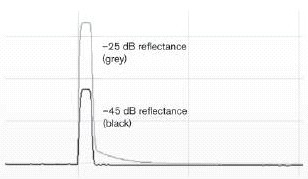- Fiber Optic Transceiver Module
- High Speed Cable
- Fiber Optical Cable
- Fiber Optical Patch Cords
- Splitter CWDM DWDM
- PON Solution
- FTTH Box ODF Closure
- PCI-E Network Card
- Network Cables
- Fiber Optical Adapter
- Fiber Optical Attenuator
- Fiber Media Converter
- PDH Multiplexers
- Protocol Converter
- Digital Video Multiplexer
- Fiber Optical Tools
- Compatible
- Can SFP+120KM be available? ...
- Why the price has so huge di...
- Can XFP transceiver modules ...
- Must optical fiber jumper be...
- Is there a module which can ...
- Can different brands SFP tra...
- How long will you change you...
- The difference between DDM S...
- Comparison of EPON and GPON
- Should we use 3rd party’s ...
- How to make differences betw...
- What is Drop Cable?
- Comparison of CWDM and DWDM ...
- GEPON Technology
- Differences of OM1, OM2, OM3...
- What is the armored fiber op...
- What is DAC cable?
- How to Choose A Right Fusion...
- Why Using a Compatible SFP O...
- Optical fiber transmission l...

Fiber optic adapter reflection strength affects attenuation dead zone
Attenuation dead zone is a specification indicators, refers the desired distance of the OTDR signal fiber backscatter intensity returns to below 0.5 dB difference after the reflection point.The receiver electronic devices and the photodetector both lead to the recovery area after reflection.
OTDR Specifications from each manufacturers, attenuation dead zone performance usually masked by excellent reflection conditions(-45 dB, -55 DB or -65 dB, depending on the OTDR the manufacturer).As we all known, the reflective intensity level will directly affect OTDR dead zone, with the rise of the reflection intensity, the blind spot will become longer. This is because the reflection intensity of the fiber optic adapter may be many times magnitude higher than backscatter signal strength measured by OTDR.
Good UPC fiber optical adaptor reflection intensity is -55 dB, the produced signal peak may 100 times higher than 5 ns pulse red fiber backscatter (approximately -75 dB at 1550 nm. While bad UPC fiber optical adaptor (reflection strength is typically -45 to -25 dB) peak signal backscatter may be 1000 to
100,000 times than the fiber. Due to the ratio range of the reflection intensity vs backscatter is so large, it is evident that the attenuation blind height depend on the fiber optical adaptor reflection intensity.
Figure1. reflection intensity of -45 dB and -25 dB typical OTDR curve: reflection strength of -25 dB attenuation dead zone emergence of significant growth.


